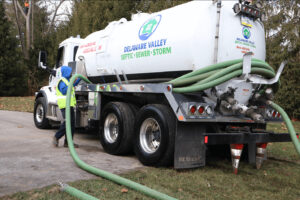Finding your septic tank can seem daunting, especially if you don’t know its exact location. However, locating your septic system with the right tools and knowledge becomes a breeze. Start by understanding the basics of a septic system. Septic tanks are crucial components of a home’s wastewater management. Everything you flush or send down a drain ends up in this tank. Knowing where your septic tank is located is essential for maintenance and potential repairs.

Understanding the Septic Tank
Before you embark on the journey to find your tank, you need to know what you’re looking for. A septic tank is typically a rectangular underground concrete, fiberglass, or plastic container. It’s a crucial part of your home’s septic system, collecting all the wastewater. If you’re trying to find your septic tank, look for a large buried object, typically rectangular, with a septic tank lid that might be located just below or at the ground level.
Common Locations of Septic Tanks
Away from Driveways and Pools: Regulations typically prevent septic tanks from being installed under driveways or pools to avoid damage.
Distance from the House: Most septic tanks are usually located between 10 and 25 feet from the house.
Direction of Sewer Lines: The septic tank is typically in the direction of the main sewer line exiting your house.
Signs Your Septic Tank is Buried Nearby
Landscape Indicators: One of the easiest ways to locate your septic tank is to observe the ground. A septic tank is buried underground, and the soil above it may settle over time, creating a noticeable depression or dip in your yard. Conversely, if the hole dug for the septic tank was larger than the tank itself, the extra backfilled soil might create a raised mound.
Greener Grass: The area above the septic tank and drain field might have lusher, greener grass then the surrounding areas due to a sluggish of failing system or a system needing repair.
Using Tools to Find Your Septic Tank
Metal Soil Probe: A metal soil probe is one of the most effective ways to find the location of the septic tank. This tool can be inserted into the ground to detect buried objects, including your septic tank cover. Most septic tanks are usually located between 10 and 25 feet from the house. By probing every two feet, starting from where your sewer line exits your home, you can trace the path to your tank.
Shovel: Sometimes, a simple shovel can help you locate the septic tank lid, especially if it’s buried just a few inches underground.
Determine Whether The Septic Tank Location Is Documented
If you’re a new homeowner, a septic tank map could be included in your property records. This map can be a valuable resource in finding the exact location of your tank. If you don’t have this map, you can contact your county health department for any records related to septic tank installation for your address.
Another way to find your septic system is by checking your home inspection paperwork or the house deed. These documents often contain valuable information about the septic tank’s location.
If you’re missing these documents, your local health department might have records of septic tank installations in your area.
Inspect Your Property for Clues
Sometimes, the landscape itself can provide hints about the septic tank location. Imperfections such as dips in the soil or small hills might indicate a buried septic tank.
As you inspect your property, watch for the septic lid. These lids are typically at or just below ground level. If you notice any unusual landscaping features or areas where the grass seems healthier, it might be worth probing that area with your metal soil probe.
Locate Your Septic Tank by Following the Sewer Line
Your home’s sewer line can be a direct path to the septic tank. This line, typically about four inches in diameter, can be traced from your basement or crawlspace. Following this line outside will often lead you directly to the septic tank. Remember, every drain in your home connects to this main sewer line.
Regular Septic Tank Maintenance: Why It’s Crucial
Once you’ve located your septic tank, it’s essential to schedule regular maintenance. Depending on the size of your tank and the number of occupants in your home, you should consider having your septic tank pumped out every one to three years.
Regular maintenance ensures your septic system runs efficiently, preventing potential backups and costly repairs. If you’re unsure about the maintenance schedule, consulting with professional septic tank service providers can provide clarity.
Need Professional Help?
If you’re still having trouble locating your septic tank or if you need maintenance on your septic system, you’re in the right place. With over 30 years of experience in the septic service industry, at Delaware Valley Septic we offer a comprehensive range of services, from septic pumping and inspection to repairs. Our team emphasizes quick, reliable service, ensuring your septic system remains in top condition. Don’t leave it to chance; trust our expertise. Reach out to us for expert assistance today!
If you want information about having your Septic System inspected Click Here
Marketing Partner // Small Talk Media




